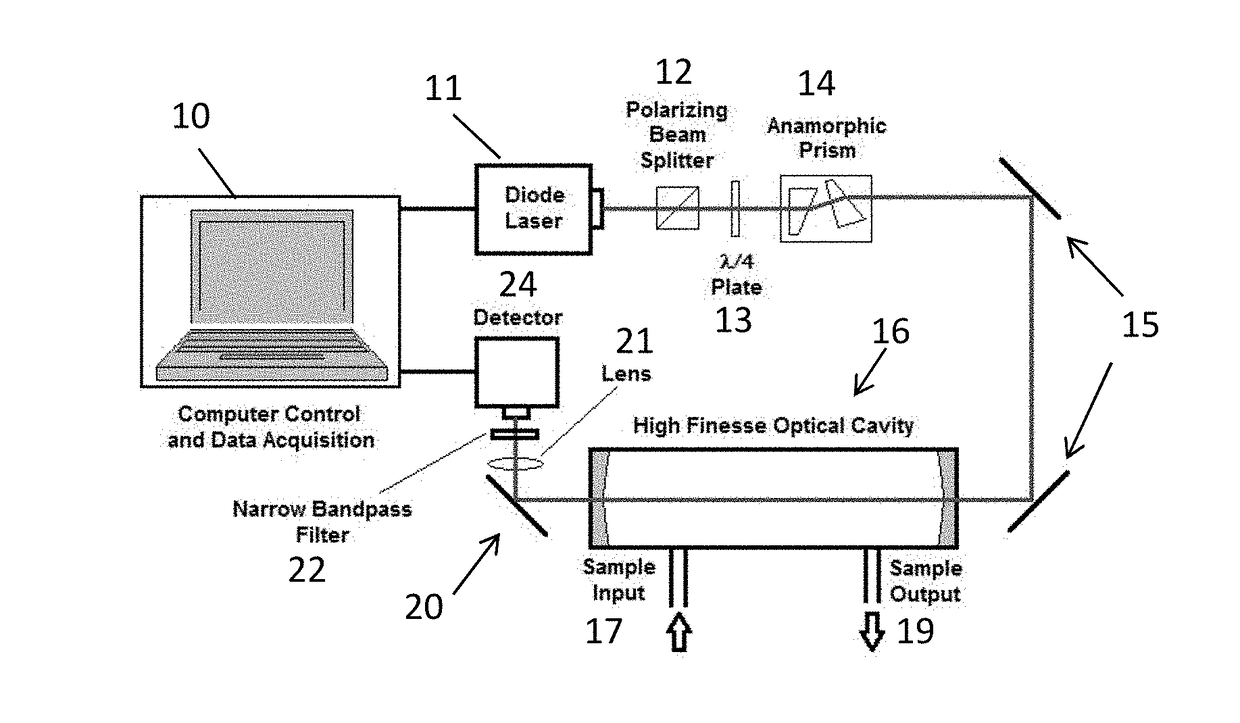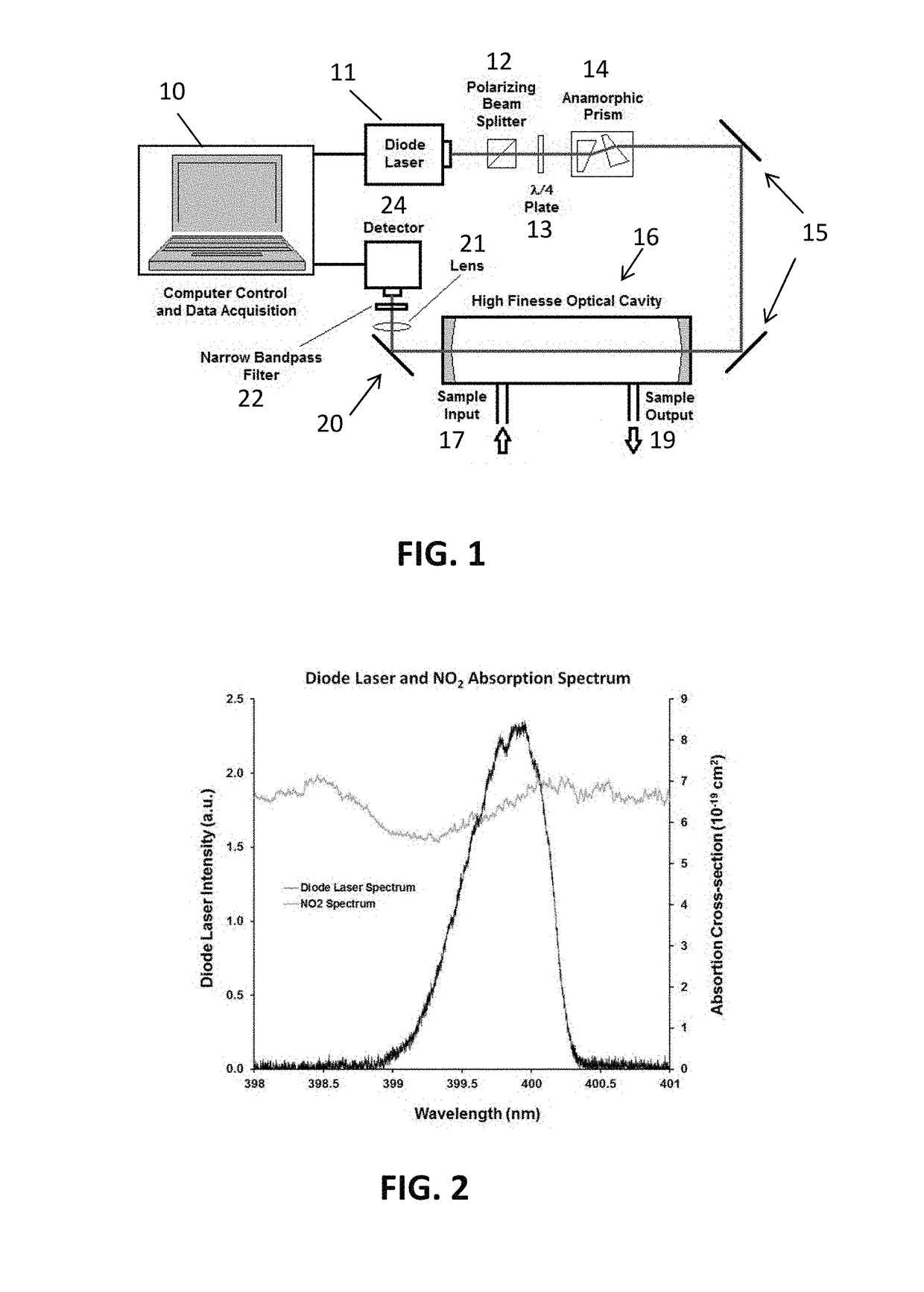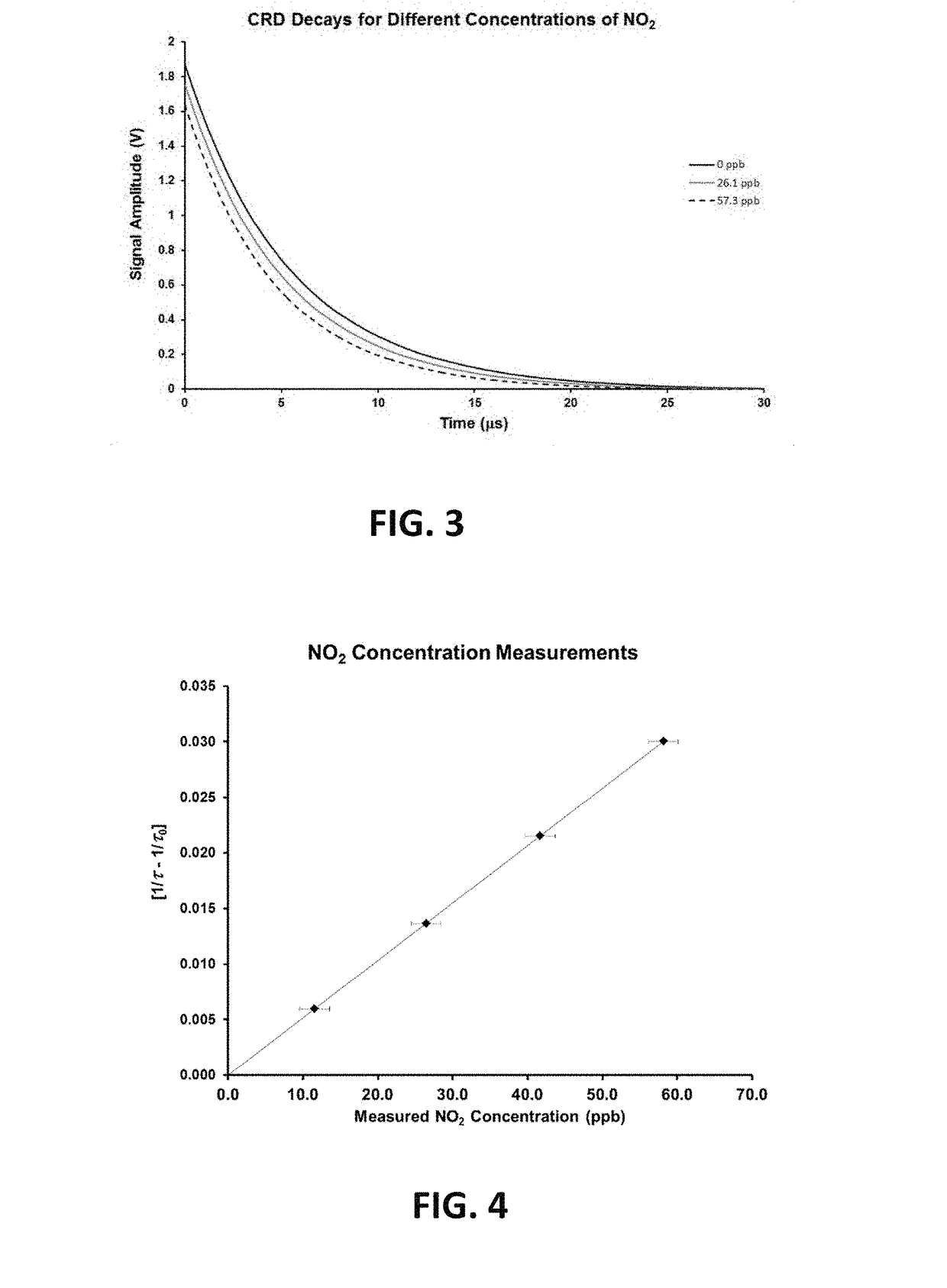Ultra-sensitive, real-time trace gas detection using a high-power, multi-mode semiconductor laser and cavity ringdown spectroscopy
a trace gas detection and real-time technology, applied in the field of high-sensitivity trace gas sensors, can solve the problems of difficult field use implementation of crds and easy vibration of the apparatus
- Summary
- Abstract
- Description
- Claims
- Application Information
AI Technical Summary
Benefits of technology
Problems solved by technology
Method used
Image
Examples
Embodiment Construction
[0032]A new trace gas detection technique and its applications are discussed herein. In the following description, for purposes of explanation, numerous specific details are set forth in order to provide a thorough understanding of the present invention. It will be evident, however, to one skilled in the art that the present invention may be practiced without these specific details.
[0033]The present disclosure is to be considered as an exemplification of the invention, and is not intended to limit the invention to the specific embodiments illustrated by the figures or description below. More specifically, some of the details provided below include the demonstration of the invention to detect NO2. The details specific to NO2 detection (for example the use of a multi-mode diode laser emitting near 405 nm), pertain to the embodiment described and are not intended to limit the invention to this specific laser, wavelength, molecular species or any other particulars of the embodiment. The...
PUM
 Login to View More
Login to View More Abstract
Description
Claims
Application Information
 Login to View More
Login to View More - R&D
- Intellectual Property
- Life Sciences
- Materials
- Tech Scout
- Unparalleled Data Quality
- Higher Quality Content
- 60% Fewer Hallucinations
Browse by: Latest US Patents, China's latest patents, Technical Efficacy Thesaurus, Application Domain, Technology Topic, Popular Technical Reports.
© 2025 PatSnap. All rights reserved.Legal|Privacy policy|Modern Slavery Act Transparency Statement|Sitemap|About US| Contact US: help@patsnap.com



